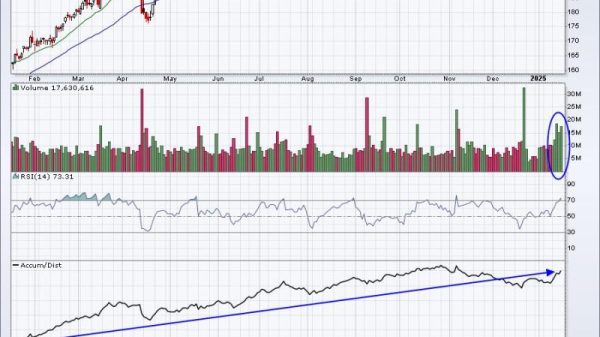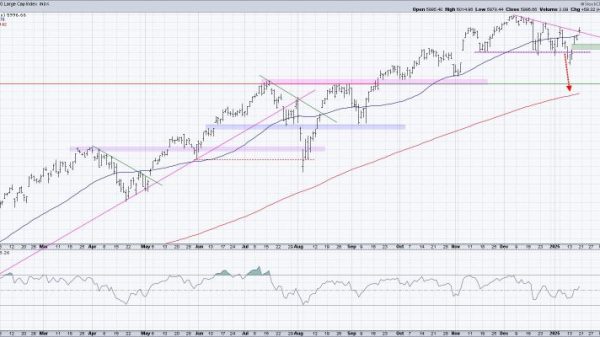For Ukraine, May is turning out to be the cruellest month.
The town of Vovchansk in the northern Kharkiv region, liberated from Russian occupation more than 18 months ago, awoke Friday to intense shelling and aerial bombardment. Russia has found another way of stretching Ukraine’s already thin blue line.
President Volodymyr Zelensky and other Ukrainian officials said that Russian efforts to advance towards the town had been thwarted, but the Russians have since tried to cut road links with Vovchansk.
The Russians launched battalion-strength attacks along a 60-kilometer stretch of the border on Friday, claiming to occupy several villages in what is known as the ‘gray zone’ along the frontier, after focusing much of their offensive capabilities this year on a grinding advance in Donetsk in the east that has seen incremental but significant progress.
As of Saturday, it appeared the Russians still held a handful of Ukrainian border villages, with intense aerial bombardment continuing in the Vovchansk area.
The cross–border attack is yet another example of what’s going wrong for the Ukrainians this year. Their forces are thinly stretched, with much less artillery than the Russians, grossly inadequate air defenses and above all a lack of soldiers. Their plight has been worsened by dry weather, allowing Russian mechanized units to move more easily.
The deputy head of Ukrainian Defense Intelligence, Major-General Vadym Skibitsky, told the Economist last week: “Our problem is very simple: we have no weapons. They always knew April and May would be a difficult time for us.”
Ukrainian intelligence estimates that despite immense losses since the full-scale invasion began, Russia has more than half-a-million men now inside Ukraine or at its borders. It is also “generating a division of reserves” in central Russia, according to Skibitsky.
“Russia sought to generate 60,000-100,000 troops for its group to attack Kharkiv and we assess it’s closer to 50,000,” Barros says, but “it still has a lot of combat power.”
It’s from this new force that units of armored infantry tried to cross the border. The available evidence suggests they were expected and suffered significant losses. But if more elite units join (there are reports that elements from other divisions may do so) Russia’s ambitions could grow.
One former Ukrainian officer who writes about the conflict on the blog Frontelligence says that “Manpower shortages compel Ukraine to avoid deploying large units along the border continuously, with fully stocked and ready for immediate-use artillery.”
He expects the situation to evolve, “with Russian forces deploying more units to penetrate additional border areas or to reinforce initial successes.”
Several analysts expect the Russians to broaden the border attacks westwards to Sumy region, which has seen months of raids by Russian special forces.
The Sever grouping could not attack and occupy a city the size of Kharkiv, but that’s likely not the goal. Barros says that it is instead to compel Ukrainian forces to pivot from Donetsk to Kharkiv region. The Russians seek to “thin Ukrainian forces out along the 600-mile frontline and create opportunities, specifically in Donetsk oblast, which is Russia’s main operational objective for 2024,” Barros says.
The latest cross-border assaults may also divert Ukrainian units from the defense of Kupiansk, also in Kharkiv region, where a Russian assault has stalled for months, as well as create a buffer zone inside Ukraine that the Kremlin says it wants to reduce attacks on Russian cities like Belgorod.
Upping the tempo
What’s happening in Kharkiv is not isolated. The Ukrainian military acknowledged this week a spike in combat engagements (more than 150 on Thursday alone), coming on top of a marked increase from March to April.
In effect, the Russians have the manpower to stretch Ukrainian defenses through multiple points of attack hundreds of kilometers apart, forcing Kyiv to guess where and when an anticipated early-summer offensive will focus.
The increased tempo of attacks exacerbates Ukraine’s two critical vulnerabilities: insufficient manpower and sparse air defenses. Russia is exploiting both in a hurry, keen to establish facts on the ground before a new wave of Western aid can help. That is at least weeks away in any meaningful amounts.
“Manpower remains a core challenge, and Ukraine is working to restore its existing degraded brigades as well as from about 10 new maneuver brigades,” Barros says.
Only in the last month has a law been passed to expand mobilization, nearly two years after Russia mobilized some 300,000 additional troops. The process was bogged down in the Ukrainian parliament for months, and President Zelensky was wary of both the cost and the political fallout of a more extensive mobilization. The numerical inferiority has sharply worsened across the frontlines, providing Russian commanders with a growing number of opportunities to probe for weaknesses.
Western analysts believe that in Chasiv Yar, Donetsk, for example, the Ukrainians may be outnumbered by 10:1, as well as suffering a chronic imbalance in shells and a complete lack of air cover. One Ukrainian military blogger this week estimated that elements of as many as 15 Russian motorized rifle brigades (each of which would have up to 1,000 men) were operating in the Chasiv Yar direction alone.
Lose the high ground around Chasiv Yar and an important belt of industrial towns and cities: Slaviansk, Kramatorsk and Kostyantinyvka, becomes much more vulnerable.
Skibitsky told the Economist that losing Chasiv Yar was a distinct possibility – “not today or tomorrow, of course, but all depending on our reserves and supplies.”
North-east of Chasiv Yar, a soldier called Stanislav told Ukrainian television this week that after a month of “very active hostilities” the Russians “are advancing from the direction of Kreminna, where they are accumulating great reserves.”
“Huge numbers of Russian infantry are attacking day and night, in large and small groups,” the soldier said.
Besides the shortage of trained soldiers, “Russia is leveraging Russian airspace as a sanctuary to strike Kharkiv oblast, highlighting the urgent need for the US to provide more long-range air defense assets and to allow the Ukrainians to use them to intercept Russian aircraft in Russian airspace,” says Barros.
The United States announced Friday a $400 million package of air defense munitions and other weapons, but much more will be needed.
Ukraine’s losses are compounded by a lack of prepared defensive positions behind the front lines. where they could fall back. In Krasnohorivka, for example, Ukrainian units were able for months to use apartment buildings and a brick factory as defensive positions. Slowly they have been obliterated – with one Russian military blogger claiming that artillery fire had buried them “under the rubble of their own shelters.”
President Zelensky and others have talked more about “active defense” – having better defensive fortifications as a building block to turn the tide on Russian advances. Zelensky himself has toured such fortifications. But they are too few and too late in critical areas, especially in Donetsk.
Zelensky asserted this week that “we will be able to stop the [Russians] in the east” when the aid arrives. But he acknowledged that “the situation there is really difficult” and contended that the aid that’s arrived so far is “not the volumes that were voted for.”
“We need everything to come faster,” he added.
Every day that it doesn’t, the Russians edge forward – and the Ukrainians lose soldiers they can’t afford to lose.
Barros says the Russians were prepared for the hiatus in military aid. “The recent Russian gains we see now are not merely opportunistic; the Russians prepared for it and are now exploiting it. Ukraine may need to make difficult decisions due to slowness of US action and the dilemma that is now causing.”
That may amount to trading territory for time. And ultimately accepting that much of the territory now lost may not be recovered.


































